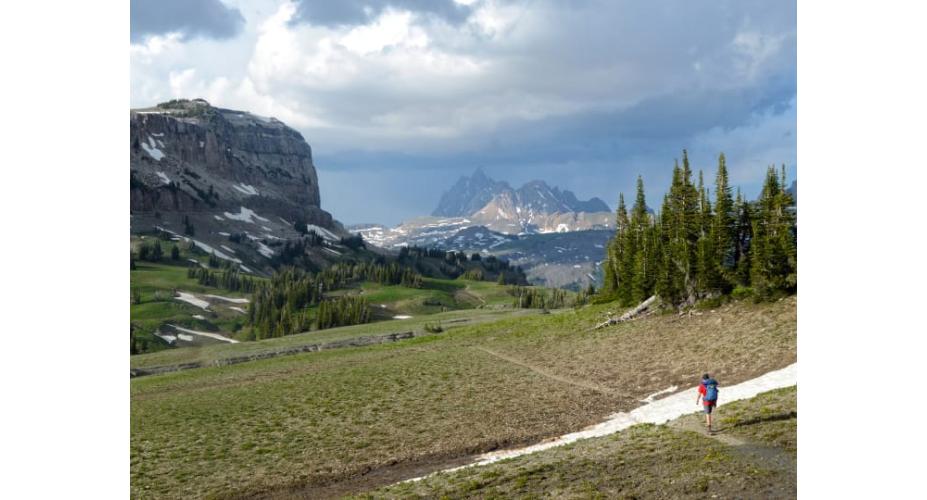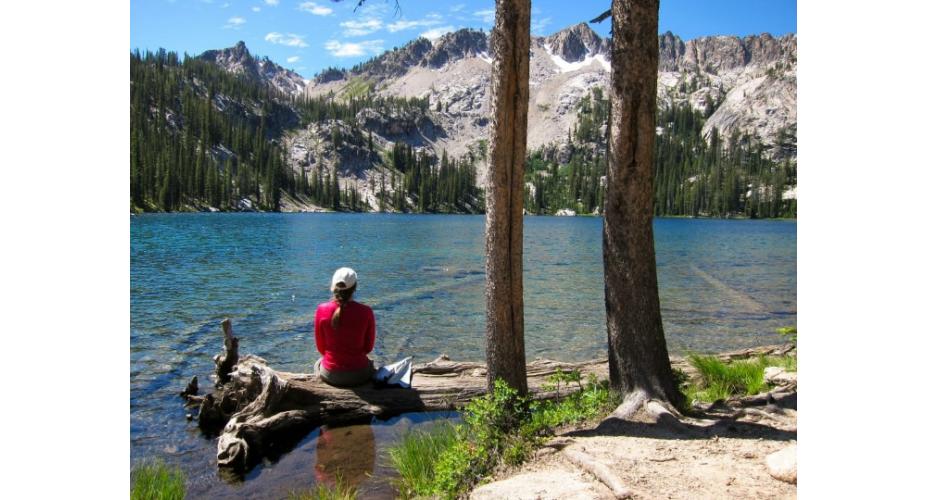
Tired of staring at your own four walls? Us too. Scratch that wanderlust itch by learning more about these 10 gorgeous solo hikes, and start building your list of must-see destinations for when the time is right.
Because sometimes, you just want to get away from it all.
Heading out on an adventure and knowing that you are solely in control of where you camp, when you stop, and what you eat can be a thrilling feeling. “Solitude is so rare in this day and age that it can be really powerful if you seek it out purposefully,” says Amy Rathke, Environmental Stewardship Coordinator for the National Outdoor Leadership School. “Gear preferences, food preferences—ultimately, the trip is yours. If you want to sit by an alpine lake and sit in the sun and read your book in the middle of the day, you don’t have to answer to anyone else. ” These ten perfect hikes, from a few miles to a few weeks long, are waiting for you.
How to Safely Hike Alone
A solo hike can also lead you into dangerous situations, so prepare for the worst. “The top thing when you are considering any trip, but especially when you are going out alone, is to have good first aid training because you are going to be handling any emergency situations by yourself,” says Rathke. Along with first aid, know the area that you are going to. Are there grizzlies? What’s the weather supposed to be like? Have a solid understanding of the place before you embark, Rathke says. Unfortunately, there's a human factor, too. Rathke warns to be wary of any fellow hikers that are simply creeping you out. If your gut is telling to you to be cautious of someone, play it safe and pitch your tent among other campers or hike alongside new friends.
Before you head out, leave a detailed trip plan of where you are going, and when you will be back. “I like to set a freak out time,” Rathke says, “so if whatever that time is approaches, and whoever you left your plan with haven’t heard from you, they know specially what to do at that point, whether it is to contact search and rescue or drive to the trailhead and retrace your steps.”
Sometimes, getting over the mental hump of being alone for days at a time is a challenge of itself. Rathke recommends bringing a book or an iPod and savoring the uninterrupted hours to read or listen to music. You might also consider taking a few items you might normally take on a group hike, like a GPS device for any challenging situations.
Once you've taken appropriate precautions, the benefits of solitude and ultimate freedom will become apparent. In the end, you might like the alone time or you might not, but it’s well worth a try. “To realize that you can execute an adventure like that from start to finish on your own, can be its own reward,” Rathke says.
1. John Muir Trail
Said to be the finest mountain scenery in the US, this 211-mile trail should definitely be on your bucket list. It runs mostly in conjunction with the Pacific Crest Trail, and often has mild, sunny weather. You will need a wilderness permit, but it’s worth it to venture through Yosemite, John Muir Wilderness, Kings Canyon, and Sequoia National Park.
2. Lost Lake Trail, Seward, Alaska
If you're new to solo backpacking, opt for a one- or two-night stay at Lost Lake. The 14-mile roundtrip hike starts in a spruce forest that opens up into lush meadows, followed by hemlock groves and mountain views. There are off-trail hiking opportunities if you feel like exploring further, but use common sense: there may be no other hikers for miles, and snow can linger until July.
3. Fall Canyon, Death Valley, California
Don’t be scared off by the name. Instead, let Death Valley's key features entice you—it's the driest, hottest, and lowest place in North America. The trails are rough and unmanaged, so definitely take a GPS device and bring plenty of water. If you want true isolation, avoid the weekends, but target April and October for prime weather. Fall Canyon offers a wealth of exploration possibilities near Titus Canyon.
4. Teton Crest Trail, Grand Teton National Park, Wyoming
If you are ready for a longer solo adventure, the 37-mile, six-day Teton Crest Trail is one of Rathke's favorites. It’s one of the park's signature hikes and delivers alpine lakes, views of the famous craggy summits, and a trip over Hurricane Pass where you can see all three Tetons in perfection. This is a moderate backpacking trip, but can easily be done solo—park at the Leigh Lake Trailhead and take the tram to start at the Granite Canyon trailhead.
5. Timberline Trail, Mt. Hood National Forest, Oregon
For a multi-day solo backpacking trip, take the 36-mile trek around Mt. Hood. You start and end at Timberline Lodge trailhead, and do need a permit in the summer, though they are free. This is a more strenuous hike that will test your limits, but you’ll get a good variety of solo hiking as well as some populated areas and campsites, if you're in need of some emergency socialization.
6. Lake Katherine, Pecos Wilderness, Santa Fe, New Mexico
Start at Ski Santa Fe, follow the Windsor Trail up to the well-marked path leading to Lake Katherine, and don’t forget your fishing pole. It’s the largest and deepest lake in the Pecos and sits just below Mount Baldy, which you can veer off and climb, too. There are plenty of trails to make this a loop hike as well, offering connections to the Windsor to Lake Peak, Deception Peak, and Raven's Ridge.
7. Wilcox Pass, Jasper National Park, Alberta, Canada
On some hikes, you just want to take in the beauty without being rushed by co-hikers. Wilcox Pass provides views of the Columbia icefields along with the Athabasca glacier, and the glaciated Mount Andromeda, Snow Dome, and Mount Kitchener. Take your time viewing the glaciers, then continue to the open meadows to spy bighorn sheep.
8. Delicate Arch, Arches National Park, Moab, Utah
Not only are all of the hikes in this area highly recommended, the small-town of Moab is friendly and welcome to all adventurers. Canyonlands National Park is nearby, but Arches is easier to navigate with better marked trails. Both are popular with hikers and mountain bikers, but you can still easily get away to appreciate the solitude. The Delicate Arch hike is only 3 miles roundtrip, but can take about two to three hours. There is no shade, so make sure you pack plenty of water and sunscreen.
9. Cabot Trail, Cape Breton Highlands National Park, Nova Scotia, Canada
The 185-mile Cabot Trail covers the northern tip of Cape Breton Island, consistently rated one of the top destinations in North America. With more than 25 trails to explore, you can easily do a variety of hikes and spot plenty of wildlife, too.
10. Springer Mountain to Three Forks, Appalachian Trial, Ellijay, Georgia
This southernmost, 8.6-mile stretch of the Appalachian Trail covers a variety of terrain, like mossy creeks, pine, rhododendron, and plenty of wildflowers before heading to the summit of Springer Mountain. The out-and-back trail has parking lots on both ends and isn’t very strenuous—you can take the time to reflect and enjoy a lush hike by your lonesome.
Written by Mattie Schuler for Backpacker and legally licensed through the Matcha publisher network. Please direct all licensing questions to legal@getmatcha.com.






